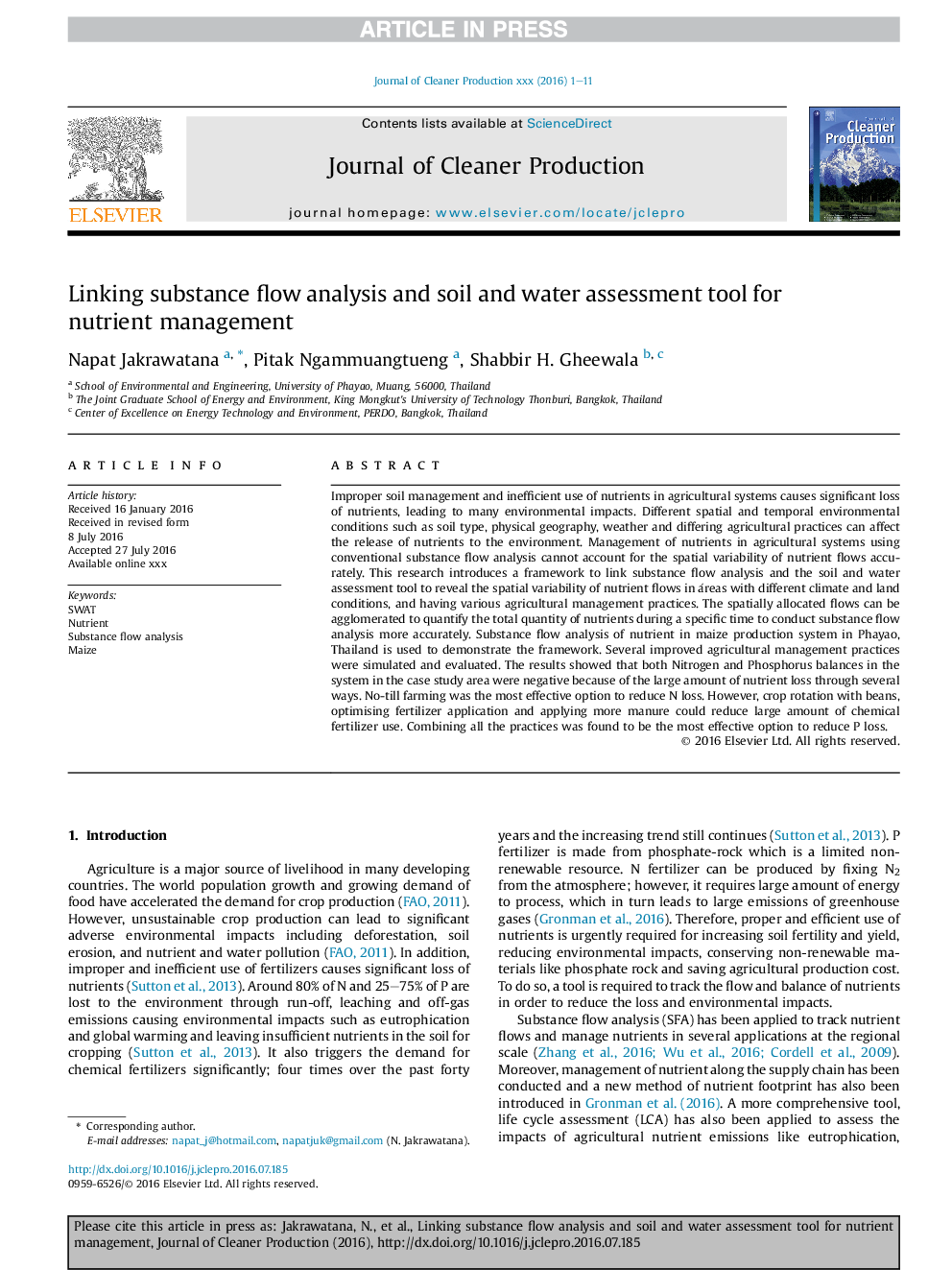| Article ID | Journal | Published Year | Pages | File Type |
|---|---|---|---|---|
| 5481638 | Journal of Cleaner Production | 2017 | 11 Pages |
Abstract
Improper soil management and inefficient use of nutrients in agricultural systems causes significant loss of nutrients, leading to many environmental impacts. Different spatial and temporal environmental conditions such as soil type, physical geography, weather and differing agricultural practices can affect the release of nutrients to the environment. Management of nutrients in agricultural systems using conventional substance flow analysis cannot account for the spatial variability of nutrient flows accurately. This research introduces a framework to link substance flow analysis and the soil and water assessment tool to reveal the spatial variability of nutrient flows in áreas with different climate and land conditions, and having various agricultural management practices. The spatially allocated flows can be agglomerated to quantify the total quantity of nutrients during a specific time to conduct substance flow analysis more accurately. Substance flow analysis of nutrient in maize production system in Phayao, Thailand is used to demonstrate the framework. Several improved agricultural management practices were simulated and evaluated. The results showed that both Nitrogen and Phosphorus balances in the system in the case study area were negative because of the large amount of nutrient loss through several ways. No-till farming was the most effective option to reduce N loss. However, crop rotation with beans, optimising fertilizer application and applying more manure could reduce large amount of chemical fertilizer use. Combining all the practices was found to be the most effective option to reduce P loss.
Related Topics
Physical Sciences and Engineering
Energy
Renewable Energy, Sustainability and the Environment
Authors
Napat Jakrawatana, Pitak Ngammuangtueng, Shabbir H. Gheewala,
